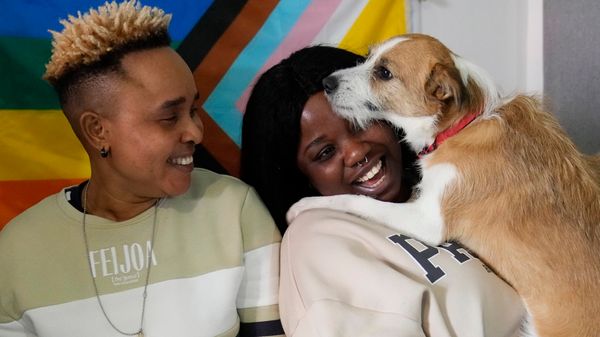July 5, 2011
Will New Census Data Spur Passage of LGBT Legislation in Calif.?
Sylvia Rodemeyer READ TIME: 3 MIN.
Will new Census statistics spur progress on LGBT-specific legislation in the Golden State?
The California-based Williams Institute late last month released a report on same-sex couples living in the state. The think tank compiled figures and statistics gathered from the 2010 Census. And they shed light on the number of same-sex couples that willingly identify as a couple, though there are still countless couples that mistakenly identify as different-sex couples or don't identify at all. The report may actually help legislative decisions that impact the LGBT Californians.
"The number of identified same-sex couples has risen at a greater rate than population inflation since the 2000 census, particularly in conservative areas of the state," said Gary Gates of the Williams Institute at the UCLA School of Law.
The trend of higher identification suggests a higher level of safety and comfort with coming forward for LGBT couples.
The figures state that there are 125,516 same-sex identified couples in California, or 9.98 same-sex couples per 1,000 households. Of those, 53 percent are female and 47 percent are male. Children are being raised in 21 percent of those homes.
Historically, Census data on same-sex couples has been a critical resource for framing national, state, and local debates about LGBT rights. Gates says previous Williams Institute data has proven helpful in the ongoing Proposition 8 case and other legal battles.
"It's hard for the opposition to dispute facts. When the figures show that LGBT population exists, you can't ignore that," said Gates, who co-authored the Gay and Lesbian Atlas. His doctoral dissertation included the first significant research study of the demography of the country's gay and lesbian population using Census data.
"I've been invested in LGBT demographics throughout my work, so this position was a natural fit," added Gates.
Equality California and other statewide LGBT organizations are grateful for these statistics, but they feel the Census' reporting doesn't go far enough.
"The LGBT community lacks the robust demographic data that is available to other communities," said Mario Guerrero, director of government affairs for Equality California. "We welcome this new information as a partial solution to this lack of data. However, because the Census does not ask questions on sexual orientation and gender identity, an accurate number on the LGBT population is not available, which denies our community fair representation and weakens our community's voice."
The Williams Institute has been a leader in disseminating and analyzing Census data. Throughout the summer, the think tank will be releasing Census snapshots for all 50 states, the District of Columbia and Puerto Rico. The snapshots will provide demographic and geographic information about same-sex couples and those raising children.
While the number of same-sex identified couples has increased, it still may be inaccurate. It is possible that some same-sex couples may be unwilling to identify themselves as such on the Census due to concerns about confidentiality.
"While the numbers do not surprise us, it is important that we gather more data on LGBT people," said Guerrero of the results. Same-sex couples may experience stigma and discrimination and consider it too risky to identify as spouses or unmarried partners on a government survey like the Census. Instead, they may choose to call themselves roommates or unrelated adults.
Williams Institute scholars estimate that perhaps 25 percent of identified same-sex couples in the 2010 Census may, in fact, be miscoded heterosexual couples. Given that most different-sex couples are married, the bulk of these miscodes likely occur among same-sex couples identified as spouses.






